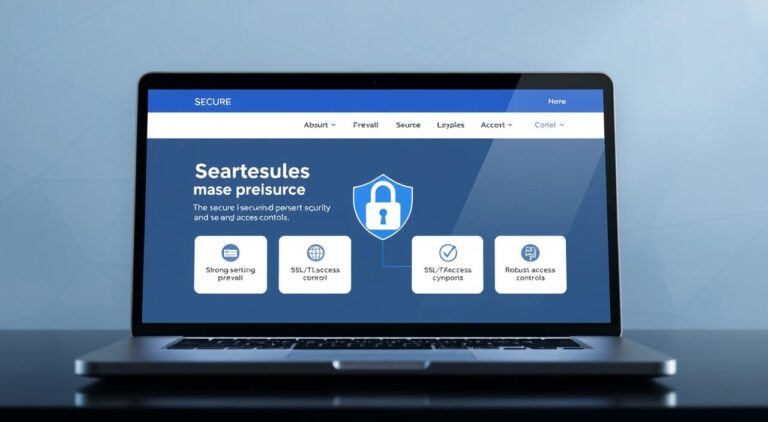
As a developer, you face a growing concern in the digital landscape: protecting your mobile app from cyber threats. Mobile security is a top priority to safeguard user data and prevent financial losses. You need to stay ahead of potential threats and implement robust security measures to ensure your app’s integrity.
To address the rising mobile security concerns, you must prioritize app security. Cyber threats are becoming increasingly sophisticated, and it’s crucial to take proactive steps to secure your app. This article will provide you with expert-recommended app security tips and best practices to help you bulletproof your app and protect it from cyber threats.
Understanding the Critical Nature of App Security
When you create and use apps, knowing the threat landscape is key. Your app’s security is vital to keep your users’ data safe and avoid financial losses. Using strong data encryption and secure storage can reduce the risk of security breaches.
The cost of a security breach can be huge. The average cost of a data breach is going up every year. To grasp the risks, let’s explore some common attacks:
- Phishing attacks, which can trick users into revealing sensitive information
- SQL injection attacks, which can compromise database security
- Cross-site scripting (XSS) attacks, which can allow attackers to inject malicious code into your app
By knowing these attacks and using strong security, like data encryption and secure storage, you can protect your app and users. This is crucial in today’s digital world, where a breach can have lasting effects.

Fundamental App Security Measures You Can’t Ignore
When you’re making and launching your app, remember to focus on authentication and API security. This helps stop unauthorized access and data leaks. Using strong authentication, like multi-factor authentication, can greatly lower the chance of security issues.
It’s also key to keep your app’s API safe. This means using API security steps like authentication, rate limits, and checking user input. These actions help block bad attacks. By focusing on these basic security steps, you keep your users’ data safe and private.
Here are some top tips for authentication and API security:
- Adding multi-factor authentication for extra security
- Using HTTPS for safe data sending
- Checking user input to stop SQL injection and XSS attacks
By sticking to these tips and making authentication and API security a priority, you protect your app and users. This ensures a safe and enjoyable experience for everyone.
Data Encryption and Secure Storage Protocols
As you work on your app, keeping your users’ data safe is key. You need to use strong data encryption and secure storage. This way, you protect their sensitive info from hackers. Data encryption makes data unreadable without the right keys.
For secure storage, follow some important steps. Choose a trusted cloud service with top-notch security. Also, use HTTPS to keep data safe while it’s being sent.
- Use strong encryption like AES
- Keep your app’s keys safe and update them often
- Keep your app updated to avoid security holes
By focusing on data encryption and secure storage, you lower the chance of data leaks. Always check for new security tips to keep your app safe and reliable.
Authentication and Authorization Frameworks
Securing your app is key, and authentication and authorization frameworks play a big role. They stop unauthorized access to important data and features. This makes sure only the right people can get to protected areas.
For strong authentication, think about using OAuth and OpenID Connect. These methods are safe for checking who users are and what they can do. Also, using rate limiting and blocking IP addresses can stop brute-force and DoS attacks.
Here are some tips for using authentication and authorization well:
- Use secure ways to store and send passwords
- Add extra security with multi-factor authentication
- Keep data safe while it’s moving with HTTPS
- Keep your security systems up to date
By following these tips and setting up strong security, you can protect your app and its users. This keeps them safe from unauthorized access and other dangers.
Securing Your App’s API Infrastructure
As you work on your app, making sure your API is secure is key. This helps stop bad attacks and keeps data safe. Your API is a big part of your app, and keeping it safe is vital.
To make your API secure, use API authentication methods like API keys and JSON Web Tokens (JWT). This makes sure only the right clients can get to your APIs. Also, rate limiting and request validation help stop bad use and attacks.
Implementing Security Measures
- Use security headers like Content Security Policy (CSP) and Cross-Origin Resource Sharing (CORS). They help stop XSS and other attacks.
- Do penetration testing often to find weak spots in your API.
- Watch your API for odd activity. Use real-time security monitoring solutions to act fast on threats.
By focusing on API security and using these steps, you can keep your app and users safe. This builds trust in your brand.
Regular Security Testing and Monitoring
To keep your app safe from cyber threats, regular security checks are key. Automated tools scan for vulnerabilities in your code and setup. Penetration tests find weaknesses that tools might miss.
Using real-time monitoring systems like IDS and SIEM gives you quick alerts. This helps in responding fast to security issues.
By being proactive in security monitoring, you can stay one step ahead of cyber threats. Regular security tests and monitoring are crucial. They help keep your app safe and protect your users’ data.





